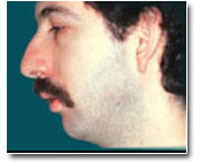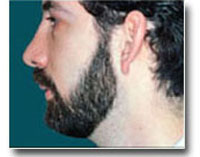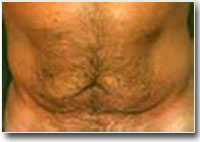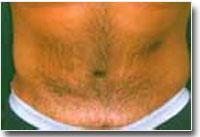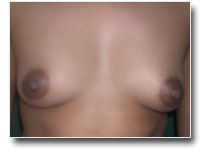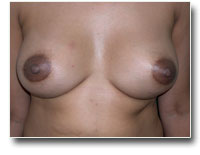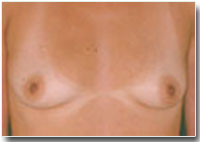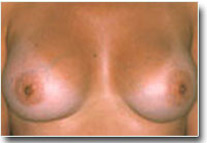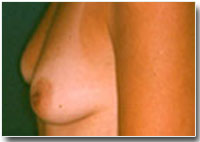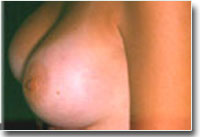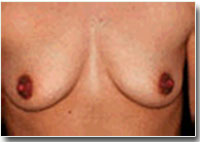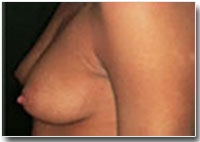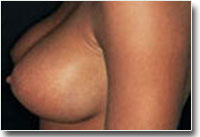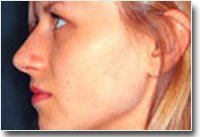Plastic Surgeons Double Bay
Plastic surgery is a medical specialty concerned with the correction or restoration of form and function. Though cosmetic or aesthetic surgery is the best-known kind of plastic surgery, most plastic surgery is not cosmetic: plastic surgery includes many types of reconstructive surgery, hand surgery, microsurgery, and the treatment of burns.
Plastic Surgeons Double Bay: Contents
- 1 Etymology
- 2 History
- 3 Techniques and procedures
- 4 Reconstructive surgery
- 5 Cosmetic surgery
- 6 Sub-specialties
- 7 Plastic surgery obsession
- 8 See also
- 9 References
- 10 Further reading
- 11 External links
|
Etymology
In the term plastic surgery, the adjective plastic denotes sculpting, and derives from the Greek πλαστική (τέχνη), plastikē (tekhnē), “the art of modelling” of malleable flesh.
Plastic Surgeons Double Bay: History
Walter Yeo, a British soldier, is often cited as the first known person to have benefited from plastic surgery. The photograph shows him before the procedure (left) and after (right) receiving a skin flap surgery performed by Sir Harold Gillies in 1917.
Reconstructive surgery techniques were being carried out in India by 800 BC. Sushruta, the father of Surgery, made important contributions to the field of plastic and cataract surgery in 6th century BC. The medical works of both Sushruta and Charak originally in Sanskrit were translated into Arabic language during the Abbasid Caliphate in 750 AD. The Arabic translations made their way into Europe via intermediaries. In Italy the Branca family of Sicily and Gaspare Tagliacozzi (Bologna) became familiar with the techniques of Sushruta.
British physicians travelled to India to see rhinoplasties being performed by native methods. Reports on Indian Rhinoplasty performed by a Kumhar vaidya were published in the Gentleman's Magazine by 1794. Joseph Constantine Carpue spent 20 years in India studying local plastic surgery methods. Carpue was able to perform the first major surgery in the Western world by 1815. Instruments described in the Sushruta Samhita were further modified in the Western world.

Aulus Cornelius Celsus, who lived in the first century AD, described plastic surgery of the face, using skin from other parts of the body
The ancient Egyptians and Romans also performed plastic cosmetic surgery. The Romans were able to perform simple techniques, such as repairing damaged ears from around the 1st century BC. For religious reasons, they did not dissect either human beings or animals, thus their knowledge was based in its entirety on the texts of their Greek predecessors. Notwithstanding, Aulus Cornelius Celsus left some surprisingly accurate anatomical descriptions, some of which — for instance, his studies on the genitalia and the skeleton — are of special interest to plastic surgery.
In 1465, Sabuncuoglu's book, description, and classification of hypospadias was more informative and up to date. Localization of urethral meatus was described in detail. Sabuncuoglu also detailed the description and classification of ambiguous genitalia. In mid-15th century Europe, Heinrich von Pfolspeundt described a process "to make a new nose for one who lacks it entirely, and the dogs have devoured it" by removing skin from the back of the arm and suturing it in place. However, because of the dangers associated with surgery in any form, especially that involving the head or face, it was not until the 19th and 20th centuries that such surgery became common.
Up until the techniques of anesthesia became established, surgeries involving healthy tissues involved great pain. Infection from surgery was reduced by the introduction of sterile techniques and disinfectants. The invention and use of antibiotics, beginning with sulfa drugs and penicillin, was another step in making elective surgery possible.
In 1792, Chopart performed operative procedure on a lip using a flap from the neck. In 1814, Joseph Carpue successfully performed operative procedure on a British military officer who had lost his nose to the toxic effects of mercury treatments. In 1818, German surgeon Carl Ferdinand von Graefe published his major work entitled Rhinoplastik. Von Graefe modified the Italian method using a free skin graft from the arm instead of the original delayed pedicle flap.
The first American plastic surgeon was John Peter Mettauer, who, in 1827, performed the first cleft palate operation with instruments that he designed himself. In 1845, Johann Friedrich Dieffenbach wrote a comprehensive text on rhinoplasty, entitled Operative Chirurgie, and introduced the concept of reoperation to improve the cosmetic appearance of the reconstructed nose.
In 1891, American otorhinolaryngologist John Roe presented an example of his work, a young woman on whom he reduced a dorsal nasal hump for cosmetic indications. In 1892, Robert Weir experimented unsuccessfully with xenografts (duck sternum) in the reconstruction of sunken noses. In 1896, James Israel, a urological surgeon from Germany, and in 1889 George Monks of the United States each described the successful use of heterogeneous free-bone grafting to reconstruct saddle nose defects. In 1898, Jacques Joseph, the German orthopaedic-trained surgeon, published his first account of reduction rhinoplasty. In 1928, Jacques Joseph published Nasenplastik und Sonstige Gesichtsplastik.
20th century
In World War I, a New Zealand otolaryngologist working in London, Harold Gillies, developed many of the techniques of modern plastic surgery in caring for soldiers suffering from disfiguring facial injuries. Gillies was from England but volunteered in France with the Red Cross. During that time, he learned about plastic surgery. He became particularly successful in the field and was well known for his work. Kazanjian and Blair, two men hired for plastic surgery by the United States army, learned from Gillies in England.[10] His work was expanded upon during World War II by his cousin and former student Archibald McIndoe, who pioneered treatments for RAF aircrew suffering from severe burns. McIndoe's radical, experimental treatments, led to the formation of the Guinea Pig Club. In 1946, Gillies carried out the first female-to-male sex reassignment surgery.
Plastic surgery, as a specialty, evolved remarkably during the 20th century in the United States. One of the founders of the specialty, Vilray Blair, was the first chief of the Division of Plastic and Reconstructive Surgery at Washington University in St. Louis, Missouri. In one of his many areas of clinical expertise, Blair treated World War I soldiers with complex maxillofacial injuries, and his paper on Reconstructive Surgery of the Face set the standard for craniofacial reconstruction.
Plastic Surgeons Double Bay Techniques and procedures
In plastic surgery, the transfer of skin tissue (skin grafting) is a very common procedure. Skin grafts can be taken from the recipient or donors:
- Autografts are taken from the recipient. If absent or deficient of natural tissue, alternatives can be cultured sheets of epithelial cells in vitro or synthetic compounds, such as integra, which consists of silicone and bovine tendon collagen with glycosaminoglycans.
- Allografts are taken from a donor of the same species.
- Xenografts are taken from a donor of a different species.
Usually, good results are expected from plastic surgery that emphasizes careful planning of incisions so that they fall in the line of natural skin folds or lines, appropriate choice of wound closure, use of best available suture materials, and early removal of exposed sutures so that the wound is held closed by buried sutures.
Plastic Surgeons Double Bay Reconstructive surgery

Navy doctors perform reconstructive surgery on a 21-year-old patient
"Reconstructive" redirects here. For other uses, see Reconstruction (disambiguation).
Reconstructive plastic surgery is performed to correct functional impairments caused by burns; traumatic injuries, such as facial bone fractures and breaks; congenital abnormalities, such as cleft palates or cleft lips; developmental abnormalities; infection and disease; and cancer or tumours. Reconstructive plastic surgery is usually performed to improve function, but it may be done to approximate a normal appearance.
The most common reconstructive procedures are tumour removal, laceration repair, scar repair, hand surgery, and breast reduction. According to the American Society of Plastic Surgeons, the number of reconstructive breast reductions for women increased in 2007 by 2 percent from the year before. Breast reduction in men also increased in 2007 by 7 precent. Some other common reconstructive surgical procedures include breast reconstruction after a mastectomy, cleft lip and palate surgery, contracture surgery for burn survivors, and creating a new outer ear when one is congenitally absent.
Plastic surgeons use microsurgery to transfer tissue for coverage of a defect when no local tissue is available. Free flaps of skin, muscle, bone, fat, or a combination may be removed from the body, moved to another site on the body, and reconnected to a blood supply by suturing arteries and veins as small as 1 to 2 millimetres in diameter
Plastic Surgeons Double Bay Cosmetic surgery
Rhinoplasty or Nose Surgery
Aesthetic plastic surgery involves techniques intended for the "enhancement" of appearance through surgical and medical techniques, and is specifically concerned with maintaining normal appearance, restoring it, or enhancing it beyond the average level toward some aesthetic ideal.
In 2006, nearly 11 million cosmetic procedures were performed in the United States alone. The number of cosmetic procedures performed in the United States has increased over 50 percent since the start of the century. Nearly 12 million cosmetic procedures were performed in 2007, with the five most common surgeries being breast augmentation, liposuction, nasal surgery, eyelid surgery and abdominoplasty. The American Society for Aesthetic Plastic Surgery looks at the statistics for thirty-four different cosmetic procedures. Nineteen of the procedures are surgical, such as rhinoplasty or facelift. The nonsurgical procedures include Botox and laser hair removal. In 2010, their survey revealed that there were 9,336,814 total procedures in the United States. Of those, 1,622,290 procedures were surgical (p. 5). They also found that a large majority, 81%, of the procedures were done on Caucasian people (p. 12). The increased use of cosmetic procedures crosses racial and ethnic lines in the U.S., with increases seen among African-Americans and Hispanic Americans as well as Caucasian Americans. In Europe, the second largest market for cosmetic procedures, cosmetic surgery is a $2.2 billion business. Cosmetic surgery is now very common in countries such as the United Kingdom, France, and Germany. In Asia, cosmetic surgery has become an accepted practice, and China, followed by India has become Asia's biggest comestic surgery markets. Children undergoing cosmetic eye surgery can be seen in Japan and South Korea.
The most prevalent aesthetic/cosmetic procedures include:
- Abdominoplasty ("tummy tuck"): reshaping and firming of the abdomen
- Blepharoplasty ("eyelid surgery"): reshaping of the eyelids or the application of permanent eyeliner, including Asian blepharoplasty
- Phalloplasty ("penile liposuction") : construction (or reconstruction) of a penis or, sometimes, artificial modification of the penis by surgery, often for cosmetic purposes
- Mammoplasty:
- Breast augmentations ("breast implant" or "boob job"): augmentation of the breasts by means of fat grafting, saline, or silicone gel prosthetics, which was initially performed to women with micromastia
- Reduction mammoplasty ("breast reduction"): removal of skin and glandular tissue, which is done to reduce back and shoulder pain in women with gigantomastia and/or for psychological benefit men with gynecomastia
- Mastopexy ("breast lift"): Lifting or reshaping of breasts to make them less saggy, often after weight loss (after a pregnancy, for example). It involves removal of breast skin as opposed to glandular tissue
- Buttock augmentation ("butt implant"): enhancement of the buttocks using silicone implants or fat grafting ("Brazilian butt lift") and transfer from other areas of the body
- Buttock lift: lifting, and tightening of the buttocks by excision of redundant skin
- Chemical peel: minimizing the appearance of acne, chicken pox, and other scars as well as wrinkles (depending on concentration and type of agent used, except for deep furrows), solar lentigines (age spots, freckles), and photodamage in general. Chemical peels commonly involve carbolic acid (Phenol), trichloroacetic acid (TCA), glycolic acid (AHA), or salicylic acid (BHA) as the active agent.
- Labiaplasty: surgical reduction and reshaping of the labia
- Lip enhancement: surgical improvement of lips' fullness through enlargement
- Rhinoplasty ("nose job"): reshaping of the nose
- Otoplasty ("ear surgery"/"ear pinning"): reshaping of the ear, most often done by pinning the protruding ear closer to the head.
- Rhytidectomy ("face lift"): removal of wrinkles and signs of aging from the face
- Browplasty ("brow lift" or "forehead lift"): elevates eyebrows, smooths forehead skin
- Midface lift ("cheek lift"): tightening of the cheeks
- Suction-assisted lipectomy ("liposuction"): removal of fat from the body
- Chin augmentation ("chin implant"): augmentation of the chin with an implant, usually silicone, by sliding genioplasty of the jawbone or by suture of the soft tissue
- Cheek augmentation ("cheek implant"): implants to the cheek
- Orthognathic Surgery: manipulation of the facial bones through controlled fracturing
- Fillers injections: collagen, fat, and other tissue filler injections, such as hyaluronic acid
- Laser skin resurfacing
- Liposuction:removal of fat deposits by traditional suction technique or ultrasonic energy to aid fat removal
Plastic Surgeons Double Bay Sub-specialties
Plastic surgery is a broad field, and may be subdivided further. Plastic surgery training and approval by the American Board of Plastic Surgery includes mastery of the following as well:
Burn
Burn surgery generally takes place in two phases. Acute burn surgery is the treatment immediately after a burn. Reconstructive burn surgery takes place after the burn wounds have healed.
Cosmetic
Aesthetic surgery is an essential component of plastic surgery. Plastic surgeons use cosmetic surgical principles in all reconstructive surgical procedures as well as isolated operations to improve overall appearance.
Craniofacial
Craniofacial surgery is divided into paediatric and adult craniofacial surgery. Pediatric craniofacial surgery mostly revolves around the treatment of congenital anomalies of the craniofacial skeleton and soft tissues, such as cleft lip and palate, craniosynostosis, and paediatric fractures. Adult craniofacial surgery deals mostly with fractures and secondary surgeries (such as orbital reconstruction) along with orthognathic surgery. Craniofacial surgery is an important part of all plastic surgery training programs, further training and subspecialisation is obtained via a craniofacial fellowship.
Hand
Hand surgery is concerned with acute injuries and chronic diseases of the hand and wrist, correction of congenital malformations of the upper extremities, and peripheral nerve problems (such as brachial plexus injuries or carpal tunnel syndrome). Hand surgery is an important part of training in plastic surgery, as well as microsurgery, which is necessary to replant an amputated extremity. The Hand surgery field is also practiced by orthopaedic surgeons and general surgeons (see Hand surgeon). Scar tissue formation after surgery can be problematic on the delicate hand, causing loss of dexterity and digit function if severe enough.
Micro
Microsurgery is generally concerned with the reconstruction of missing tissues by transferring a piece of tissue to the reconstruction site and reconnecting blood vessels. Popular subspecialty areas are breast reconstruction, head and neck reconstruction, hand surgery/replantation, and brachial plexus surgery.
Paediatric
Children often face medical issues very different from the experiences of an adult patient. Many birth defects or syndromes present at birth are best treated in childhood, and paediatric plastic surgeons specialize in treating these conditions in children. Conditions commonly treated by paediatric plastic surgeons include craniofacial anomalies, cleft lip and palate and congenital hand deformities.
Plastic Surgeons Double Bay Plastic surgery obsession
With increased media attention on beauty and perfection, celebrities and those alike are turning to plastic surgery more and more. Some take out loans for this purpose; one woman spent over $83,000 for 14 surgeries.
Though media and advertising do play a large role in influencing many people's lives, researchers believe that plastic surgery obsession is linked to psychological disorders. Body dysmorphic disorder is seen as playing a large role in the lives of those who are obsessed with going under the knife in order to achieve physical perfection.
BDD is when someone becomes “preoccupied with what they regard as defects in their bodies or faces.” In the United States, 2% of people suffer from body dysmorphic disorder and 15% of patients seeing dermatologist and cosmetic surgeons. This disorder can also lead to suicide in some of its sufferers.Half of the patients with the disorder who get cosmetic surgery are not pleased with the result. Surgery does not treat BDD but could make the problem worse. The exact problem is actually not easily identified causing the treatment to be even more difficult. Some say its depression or depending on what part the patient is preoccupied with it could be a sub-disorder like anorexia or muscle dysmorphia.
In some cases, people whose doctors refuse to perform any further surgeries have turned to "do it yourself" plastic surgery, injecting themselves and running extreme safety risks.
Plastic Surgeons Double Bay


